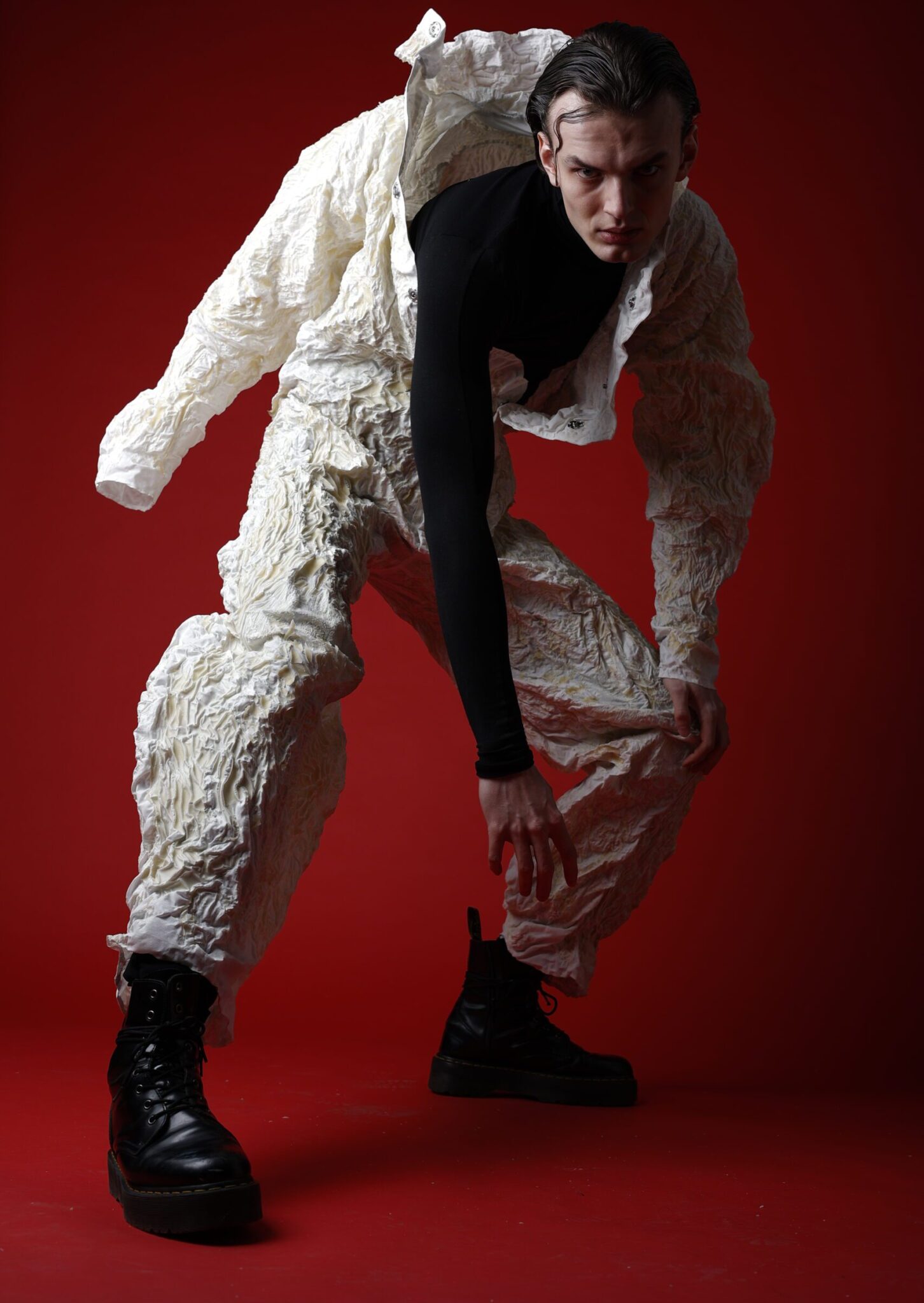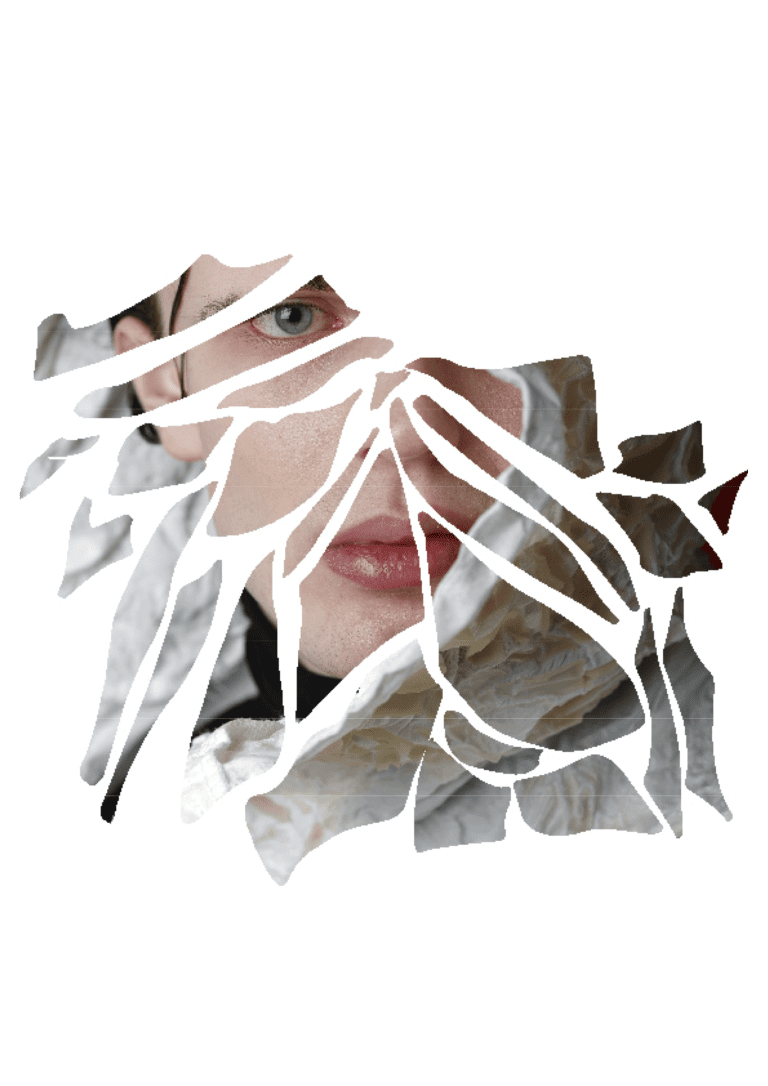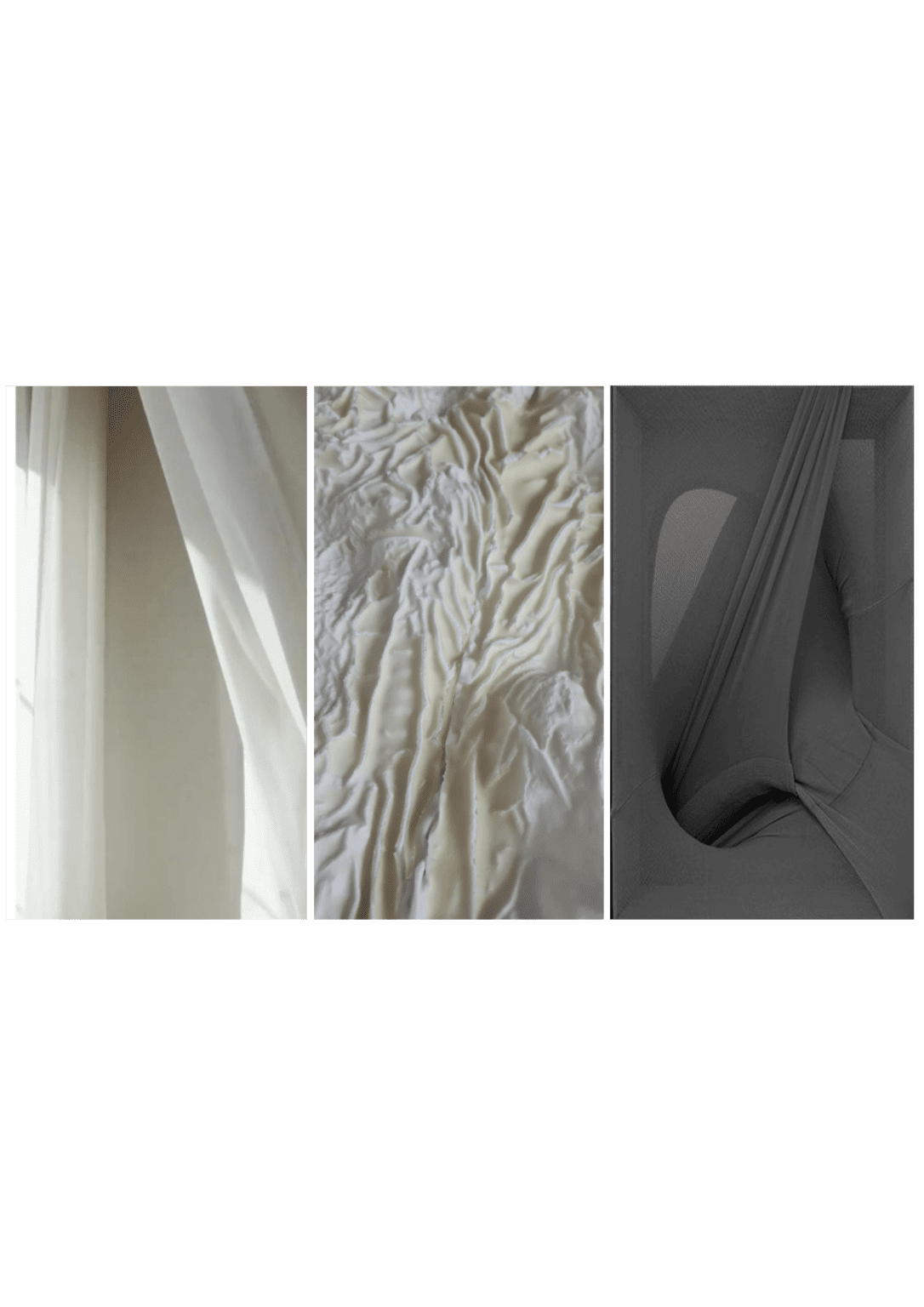
Second Skin
The inspiration for the “Second Skin” collection stemmed from a deep fascination with the molting process of reptiles and the metamorphosis of butterflies. As a designer, I wanted to translate the idea of renewal and transformation into clothing. Friedrich Hundertwasser’s concept of the “second skin,” which viewed clothing as an extension of our identity, significantly influenced my creative approach. Hundertwasser wrote: “When man’s second skin is uniformed, made by lifeless machines, or dictated by fashion, it is as if a foreign body is imposed on man, and he becomes ill.” These words inspired me to create clothing that feels like a natural extension of the body while symbolizing the process of renewal.
Nature's Transformation
The idea of metamorphosis particularly fascinated me. Like a butterfly evolving from an egg to a caterpillar and finally to a winged insect, humans also undergo constant changes – physically, mentally, and spiritually. Rudolf Steiner’s theory that humans renew themselves every 7 years resonated with my concept and reinforced the idea that we are constantly shedding, discarding old beliefs, and evolving.


This transformation symbolizes the breakthrough into a new phase of life – from darkness to light, to the new self. Similar to butterflies, the human body constantly renews itself: organs, bones, and skin regenerate as old cells die. The liver renews itself every two years, our skeleton every 10 years, and the skin renews itself every two to five weeks. However, environmental influences accelerate cellular aging. As humans develop from infant to child, to adolescent, and finally to adult, they are subject to constant change – be it physical, psychological, or spiritual. We are shape-shifters, like butterflies. Don’t we also experience a metamorphosis, just perhaps not as fast and visible as a butterfly?
Nature's Palette
Since skin was the starting point of the project, I chose beige as the main color. Black and white are simple complementary colors that every human being has in the eye as pupil and sclerae, as nails or hair. For the accent colors, I was inspired by the animal world. Having studied the molting process of reptiles and the metamorphosis of butterflies, the vibrant green of lizards or the intense orange/red of butterflies always caught my eye. Together with the main colors, I found it a beautiful composition.
PANTONE
11-0602 TCX
Pantone
20-0018 TCX
PANTONE
11-0501 TCX
Pantone
19-0303 TCX
Pantone
12-0104 TCX
Pantone
19-1664 TCX
Pantone
12-000 TCX
Pantone
19-1557 TCX
Upcycling: Fashion Renewed

Upcycled Curtains
Sustainability was paramount in the choice of materials. I wanted to breathe new life into old materials. While studying pictures of the lizard skinning process, a stripped skin reminded me of a hood. At that moment, sitting in front of my computer looking out the window, I had the idea to design a second skin out of my old, slightly transparent linen curtains. This is how the idea for a jumpsuit with a hood was born. Old tights and sports leggings that were no longer worn by friends and family were transformed into the tight-fitting tops and pants to be worn under the jumpsuit.
Bioplastics in Fashion
For the bioplastic, I experimented with a mixture of natural, biodegradable materials. This innovative material symbolizes the molting process and represents future-oriented, sustainable materials in fashion. Applying the bioplastic was an elaborate process that required patience, but the result gives the creations a unique texture and aesthetic that makes the transformation process visually tangible.

Key Pieces of the Collection
The shedding process of reptiles and the metamorphosis of the butterfly inspired my design. My jumpsuit can be slipped off like a second skin, and the self-made bioplastic should make this process visible. The shape of the trouser legs is reminiscent of the cocoon from which the butterfly hatches after pupation, while the bioplastic is initially quite soft in consistency and must harden, just like the wings of the newly hatched butterfly. The process of hornification during the molt of reptiles can also be wonderfully depicted with bioplastic. Bioplastic stands for the horny layer that leads to the detachment of the old horny layer. Old and new both play a significant role in this process. The old skin stands for my overall, the new for the black tight-fitting pants and top. The meaning lies in the renewal of form and transformation, molting – peeling out of the skin, stripping off the old skin – and representing the development process or life cycle.
The collection is deliberately designed as unisex to emphasize the universality of the transformation process. This design decision reflects the idea that our “second skin” should be free from societal gender norms.
Capturing Change
The collection was captured in a photo shoot by Leander Rambichler. Models Finja Loechtermann and Julian Keller presented the creations in a mix of blurred effects and strong poses to emphasize the idea of transformation. The choice of a male and a female model underscores the unisex character of the collection and shows how the designs can be worn regardless of gender, emphasizing the universal nature of change and renewal.
Credits
Thank you!
A heartfelt thank you to all the talented individuals who contributed their creativity, skills, and passion to bring this project to life – your dedication has been invaluable.
photograph.
Leander Rambichler
photograph.
Maren Nordtorp Larsen
& assistant.
model.
Finja C. Loechtermann
model.
Julian W. Keller
assistant.
Paula Rischbeck
design.
Marlene Raymakers
& creative director.
Experience Your Personal Metamorphosis
Discover the transformative power of the “Second Skin” collection and let our designs inspire your own unique metamorphosis. Each piece tells a story of renewal and sustainability – a story that could be yours.
Book an exclusive appointment now and experience how we tailor the “Second Skin” designs to your individual essence. Together, we’ll find the perfect outfit that reflects your unique personality and accompanies you on your journey of self-renewal.



























